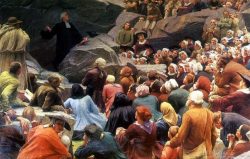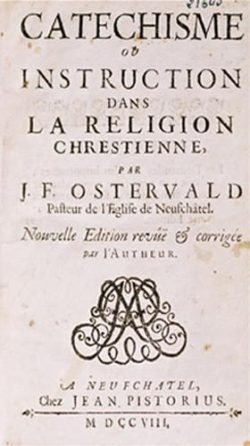Religious practice
in the time of the “Desert”
Antoine Court reorganised the practice of religion in secret (also called religion “in the Desert”), returning things to the more disciplined ways of the Reformed Church before the revoking of the Edict of Nantes, but adapting things to the new need for secrecy. Despite the ban and sporadic persecution, the most widespread practice was to gather the faithful together for worship with a pastor or ordinand.
Secret worship or "Church of the Desert" meetings
Until around 1740 “Church of the Desert” meetings were in secret, often for many people (2 000 or 3 000 participants, bringing together many churches), held at night in out of the way places like woods, deep valleys or abandoned farms. Much later (leaving aside the violent period of 1750-1752), in Languedoc, the strategy of Antoine Court laid down that meetings be in daylight, at the town gate or in a place well known to all. They were often enormous (up to 20 000 people), and now gathered together all social classes. They followed the Geneva liturgy including a long sermon. The “Lord’s Supper” was celebrated regularly. At the end of each meeting the pastor performed dozens of baptisms and weddings. In view of the increasing numbers, the national synod of 1744 asked that pastors keep registers of these.
The catechism
“Churches of the Desert” meetings generally included teaching of the catechism. However, the catechism also had to be learnt at home. The first book used was Drelincourt‘s catechism (catéchisme de Drelincourt).(1642), recommended by Antoine Court in 1715. But Calvinist orthodoxy, torn to shreds in Geneva at this time, did not rule the “Churches of the Desert” for long. In 1729 a preacher wrote that all the Languedoc students “were devouring the Ostervald catechism” and the 1744 synod formalised use of this catechism by the Neuchatel pastor in its abridged form (1st ed., 1731), which balanced “religious truths” against moral “duty”. Discipline ; 1739, laid out religious instruction for children, ending at around age 15 with a “profession of truth” in the promise of faithfulness to God, prior to the first communion.
"House Church" and family worship
If there was no meeting with a pastor, the faithful of the community met together at the home of one the consistory elders in a “House Church”, where the Sunday liturgy was used and a sermon read. This form of worship, more discreet and socially acceptable than the popular, open air meetings, was preferred by the bourgeoisie.
Banned worship also took place within the confines of the family. The traditional practice of family worship grew during the time of the “Desert”. This does not refer simply to morning and evening prayer and readings, but to a substitute for Sunday worship following a set liturgy and the reading of a printed or hand-copied sermon. A complete liturgy for French Protestants …..deprived of publicly exercising their religion (Une liturgie complète pour les protestants de France… privés de l’exercice public de leur religion), adapted from the Geneva and Neuchatel liturgies (1st ed., 1756) was published in Amsterdam. Before this, members of the Reformed Church used prayer books and Psalters that were hidden or passed from person to person.
The theology of the "Church of the Desert"
Sermons and letters of pastors in the “Church of the Desert” and copies of prayers and books seized, suggest a theology and form of devotion contrasting with, and increasingly diverging from, orthodox Calvinism. Between 1730 and 1740 the secret movement of books and sermons between the centre at Geneva-Lausanne and the “Churches of the Desert”, as far as the deep Cevennes and Ardeche, allowed people to discover the new, open and “reasonable” theology, even though the times were more suited to rereading Revelation.
Bibliography
- Books
- CARBONNIER-BURKARD Marianne et CABANEL Patrick, Une histoire des protestants en France, Desclée de Brouwer, Paris, 1998
Associated tours
-
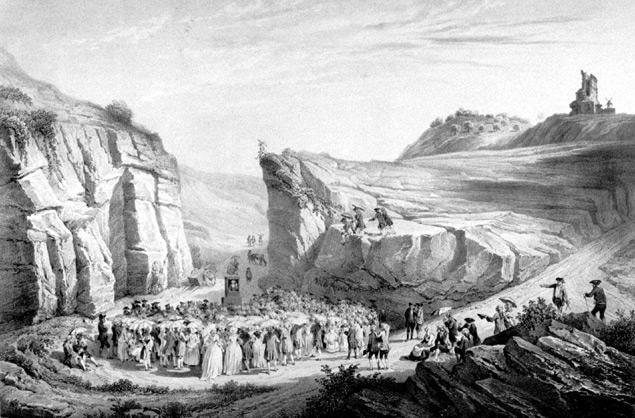
Religion in the “Desert” period
After the Revocation of the Edict of Nantes in 1685, French Protestants went into exile or abjured their religious faith. However, among those who abjured, some continued to practice in...
Associated notes
-
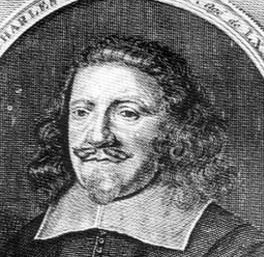
Charles Drelincourt (1595-1669)
Charles Drelincourt, a writer and a pastor, spent his life serving the reformed Churches. -

Relative tolerance for the Protestants
In the second part of the XVIIIth century, the political regime which took over the government in France was, on the whole, fairly tolerant towards Protestants, although there were some... -

The "Church of the Desert" in the Heroic Period (1715-1760)
The time when Reformed Church religious practices were banned by royal edicts is called the “Desert” period. They had to be performed in secret. It is called “heroic” because, when... -
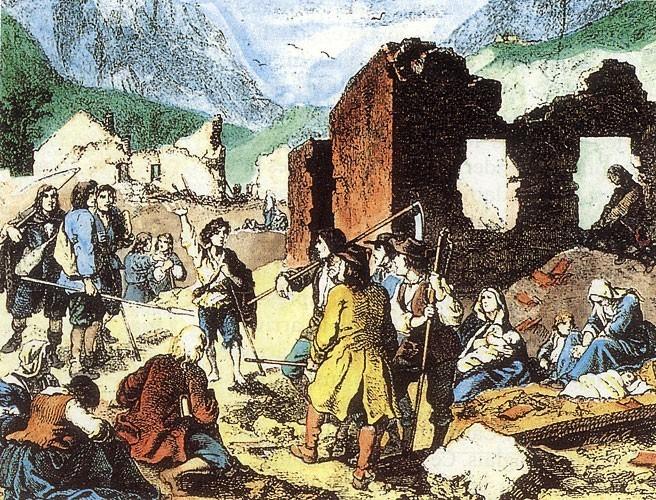
The secret re-building of churches
The secret re-building of churches was the work of Antoine Court who re-established discipline in Reformed Churches, first in the south then in some areas of the north. -
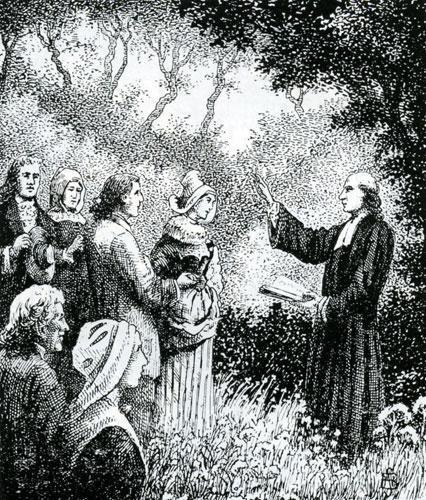
The Church under Louis XV (1724 to 1760)
Under Louis XV the Protestant church was still banned and the repression continued. But this varied over time, from region to region and depending on the person who was Intendant... -
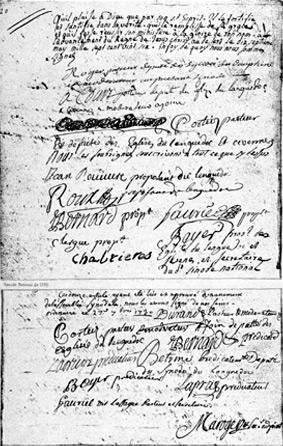
Pastors of the "Church of the Desert"
Following the revoking of the Edict of Nantes, Protestant pastors had to leave France. From 1715, encouraged by Antoine Court, a new group of pastors gradually emerged. The “Church of... -
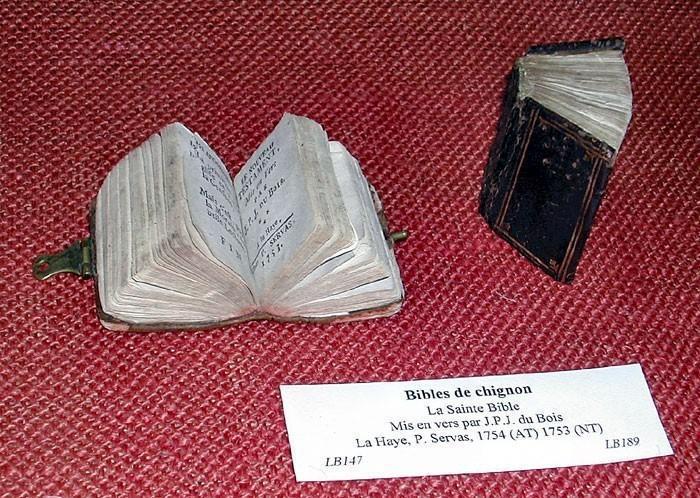
Memorabilia from "underground" life
Since Protestants still living in France might only practice their religion in the utmost secrecy, they had to hide all objects likely to be used in religious ceremonies. -
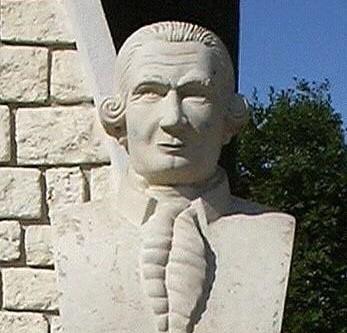
Jean Jarousseau (1729-1819)
A pastor in the “Church of the Desert”, Jean Jarousseau exercised his ministry in Saintonge at the end of the Heroic Period and during the time called the Period of...

